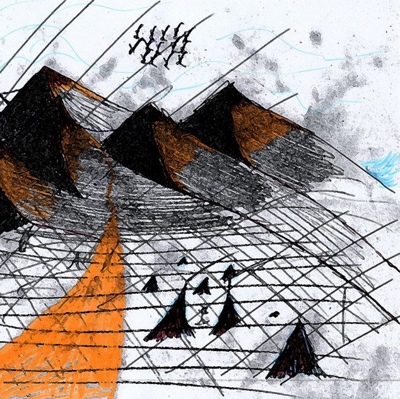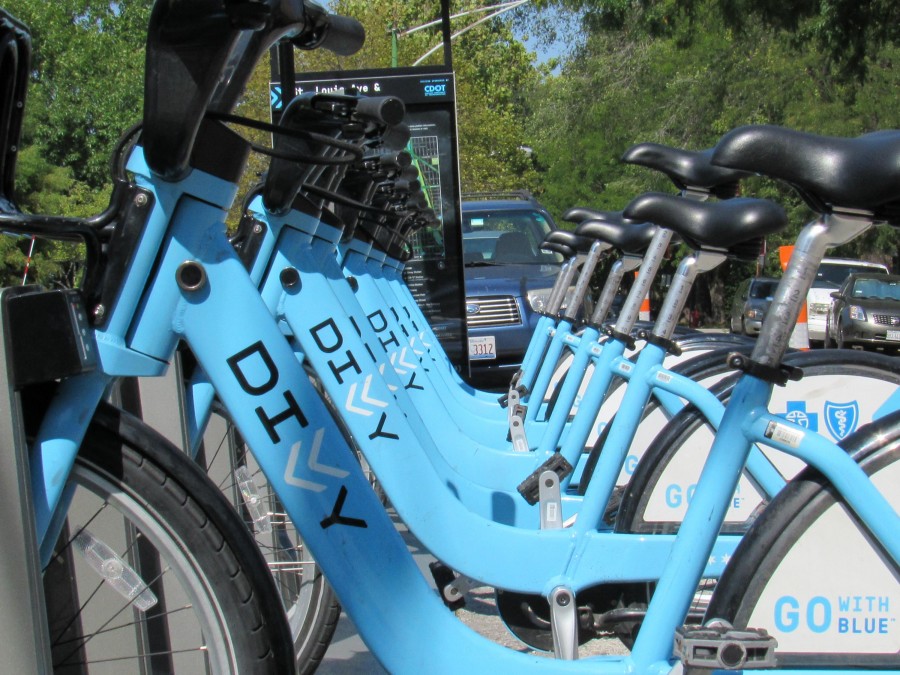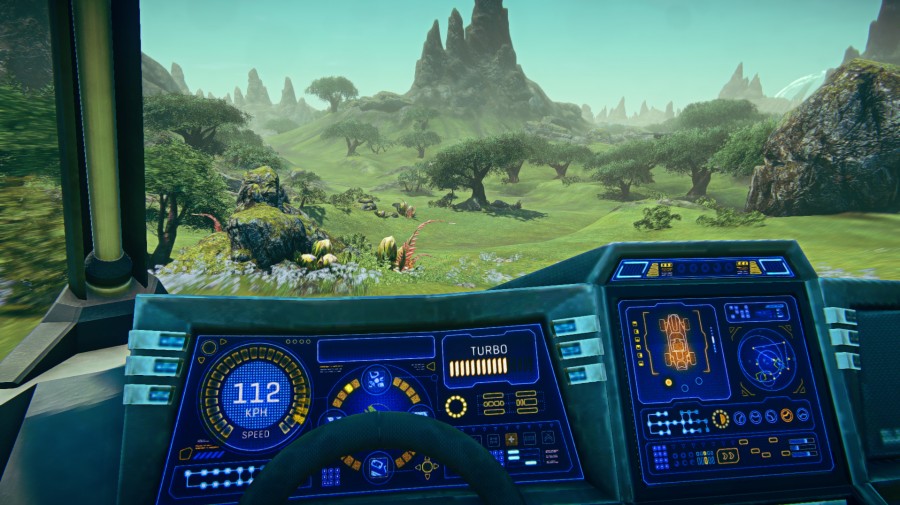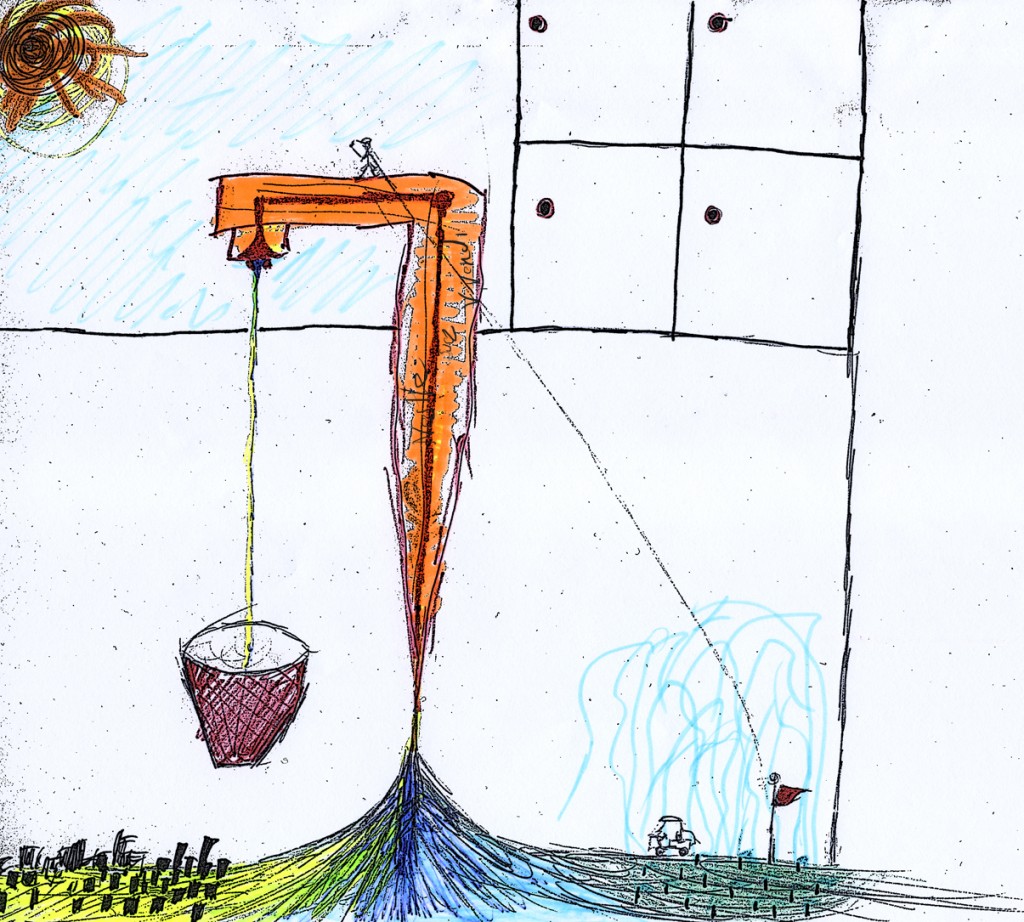Originally published in the NEIU Independent on Oct. 6 2015
If there’s any single experience common to the whole NEIU community, it’s the commute. On any given day — whether it’s on foot, by wheels or on rails — students, staff and faculty alike condemn themselves to an indefinitely long hiatus in public or private transit. Since its mid-summer arrival on campus, Chicago’s Divvy bike-share program can be counted among the transit options available to the community.
The new Divvy station replaced about two-and-a-half cars worth of parking space on the St. Louis and Balmoral avenues intersection just north of Bernard Brommel Hall (BBH). Equipped with the capacity to dock and recharge 15 bikes, it connects NEIU and the surrounding neighborhood to a total of 475 stations spread throughout the city — 175 of which, including the St. Louis station, were installed as part of a large-scale expansion launched last spring.
The expanded network spans some 18 miles between its northern and southernmost points. New stations can be found as far north as Clark and Touhy and as far south as Jeffrey Blvd and 76th street.
“I’m really happy it’s here,” said Matt Specht, Dean of Students. “For the longest time our students didn’t have any access because Divvy wasn’t this far north.”
Divvy’s Student Membership Discount, a deal reducing the annual rate of $75 to $55, was made available to NEIU students shortly into the fall semester. Graduate and undergraduate students are eligible, but there is no equivalent discount offered for faculty or staff.
Specht set up the discount with a representative from Divvy around the same time the bike-share network expanded into the area surrounding NEIU.
“The student discount has been set up for universities across Chicago,” Specht said. “So when they decided to come north of Lawrence (Avenue), it was natural that Northeastern be a part of their discount program.”
George Mason, a senior at NEIU, was in the market for a $1000 bicycle before he decided Divvy was ultimately more convenient and affordable.
“The $20 (off) is worth it,” Mason said. “Even the full price is worth it. I’ve saved a lot of time by doing Divvy, and a lot of money, and a lot of stress. A lot of students don’t make a lot of money, but our time is really worth something and Divvy helps out a whole lot with that.”
Some students, however, may be eligible to apply for Divvy For Everyone, a one-time, $5-annual membership available to individuals and families from low-income households. This discount was implemented alongside the bike-share program to extend the company’s commercial base into typically low-income neighborhoods and to attract customers finding Divvy’s base rates unaffordable.
D4E is only available to first time subscribers, so students may want to a see if they’re eligible first before purchasing a discounted student membership.
Other than the reduced annual rate, the student discount is functionally identical to a normal annual membership. Both memberships charge the same scaling overtime fees for trips longer than 30 minutes: Starting at $1.50 for any trip lasting between 30-60; then $4.50, for those between 60-90 minutes; and finally $6 for every additional 30 minutes beyond that.
The implication is that Divvy is best used for short trips — or for longer ones planned to take advantage of the bike-share network itself. The runtime of a trip is reset whenever the bike is docked at a Divvy station. This loophole is easily exploited, as long as a rider is within 30 minutes of another station, and can be used to make long distance trips without incurring overtime fees.
But data made available on Divvy’s website leaves some indication of the overall usage of NEIU’s St. Louis and Balmoral station.
Between the months of May and June, a total of 197 trips were made to or from the St. Louis Avenue station. Of those trips, 102 were departures and 80 were arrivals. Another 15 departed from St. Louis and Balmoral avenues and returned to that same station. The most common connection was with the Christiana and Lawrence avenues station located next to the Kimball Brown Line with a total of 56 trips made between them. By comparison, only 20 trips were made between St. Louis Avenue and the Clark Street and Winnemac Avenue station — the second most common connection.
“It’s good for point-to-point transportation,” Mason said. “With Divvy you don’t have to plan a bike ride. You can just be out at one point and have a transportation need, or just miss a bus, or not have the money for a cab — and you look to your right and there’s a Divvy station. It’s highly convenient. In fact, I cancelled the purchase of that bicycle and do Divvy now.”
The versatility of the bike-share program — or, at the very least, the industriousness of its users — evident through the variety of destinations, the duration of trips and distances traversed by Divvy riders. The longest trip beginning and ending at the St. Louis Avenue station lasted approximately four hours and 38 minutes. Another rider took only four minutes to get from St. Louis Avenue to Ridgeland Boulevard and Touhy Avenue.
But the value of the station is ultimately limited by its location.
The St. Louis Avenue station is situated on the Northwestern edge of Divvy’s operational network. While the nearest stations to the east are barely half-a-mile away, the closest station southwest of NEIU, on Keystone and Montrose avenues is about a mile and a half away. There are no stations at all directly west or north of the University and it’s likely to remain so until Divvy launches another major expansion.
The Divvy bike-share program is a private-public partnership owned by the Chicago Department of Transportation (CDOT) and operated by an American bike-sharing firm called Motivate — a private company responsible for the design and operation of similarly large-scale bike-share programs in cities such as New York City; Melbourn, Australia; Boston, Massachusetts; Washington DC; and Columbus, Ohio.




